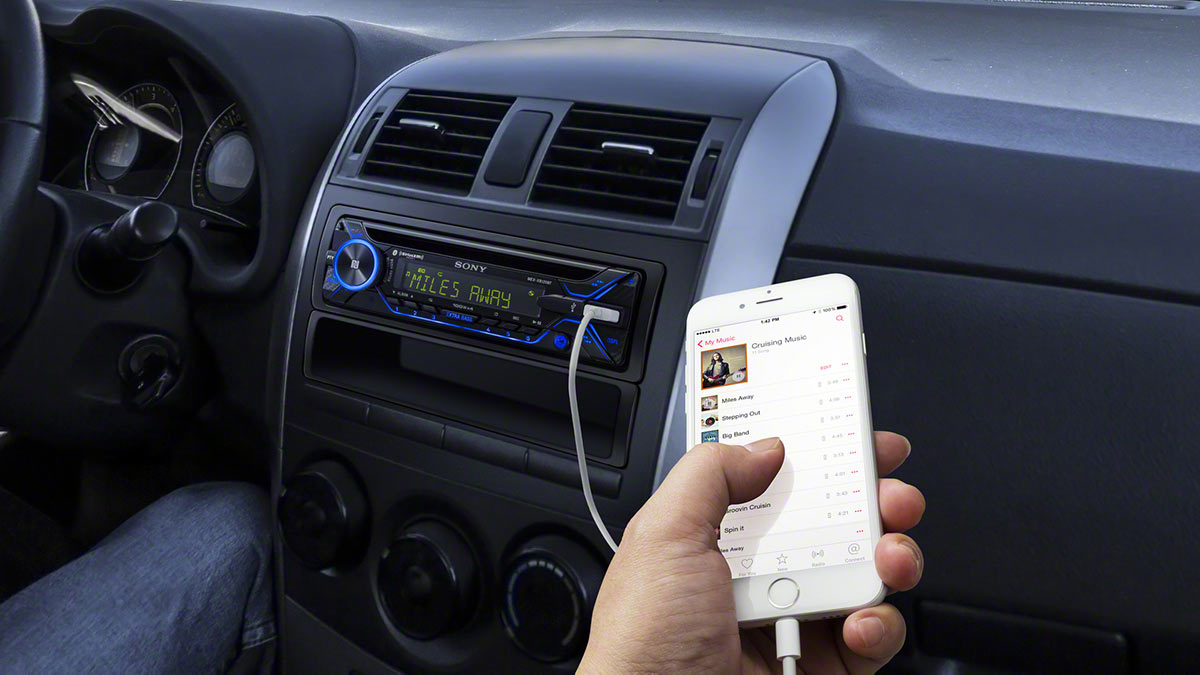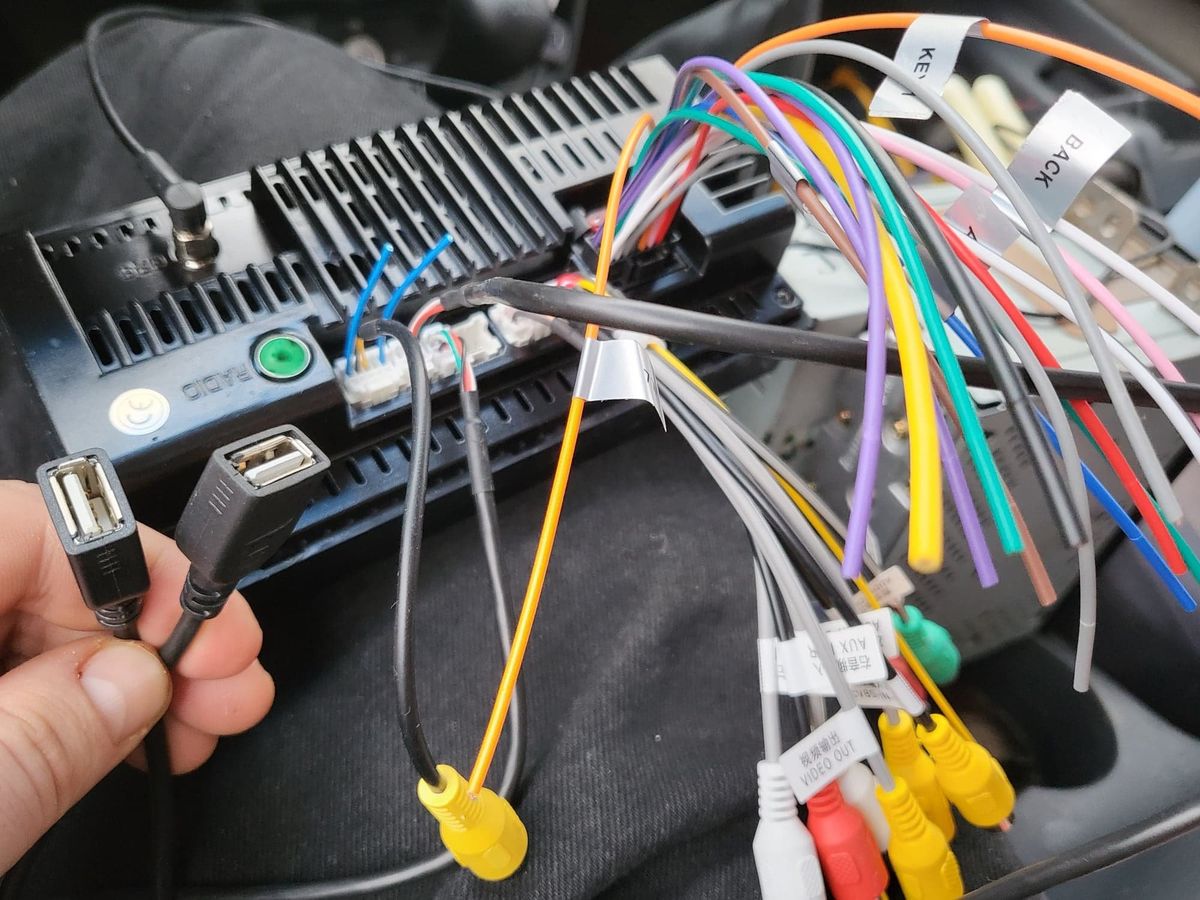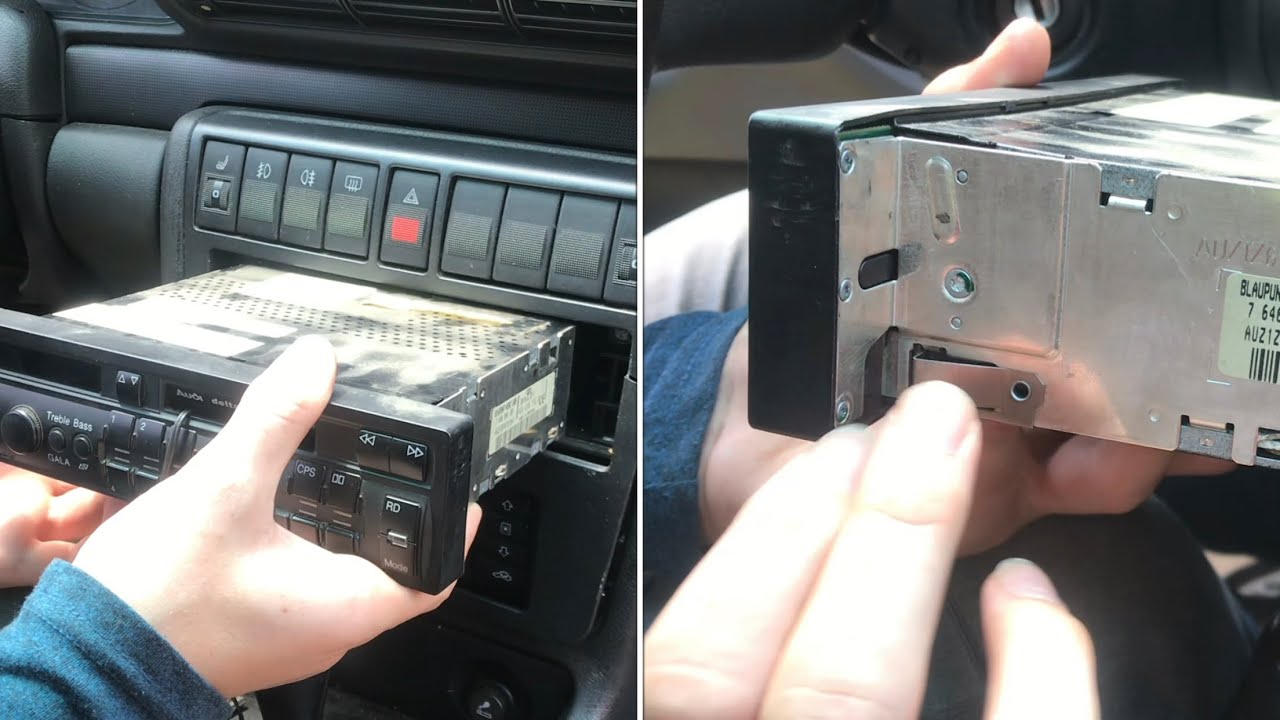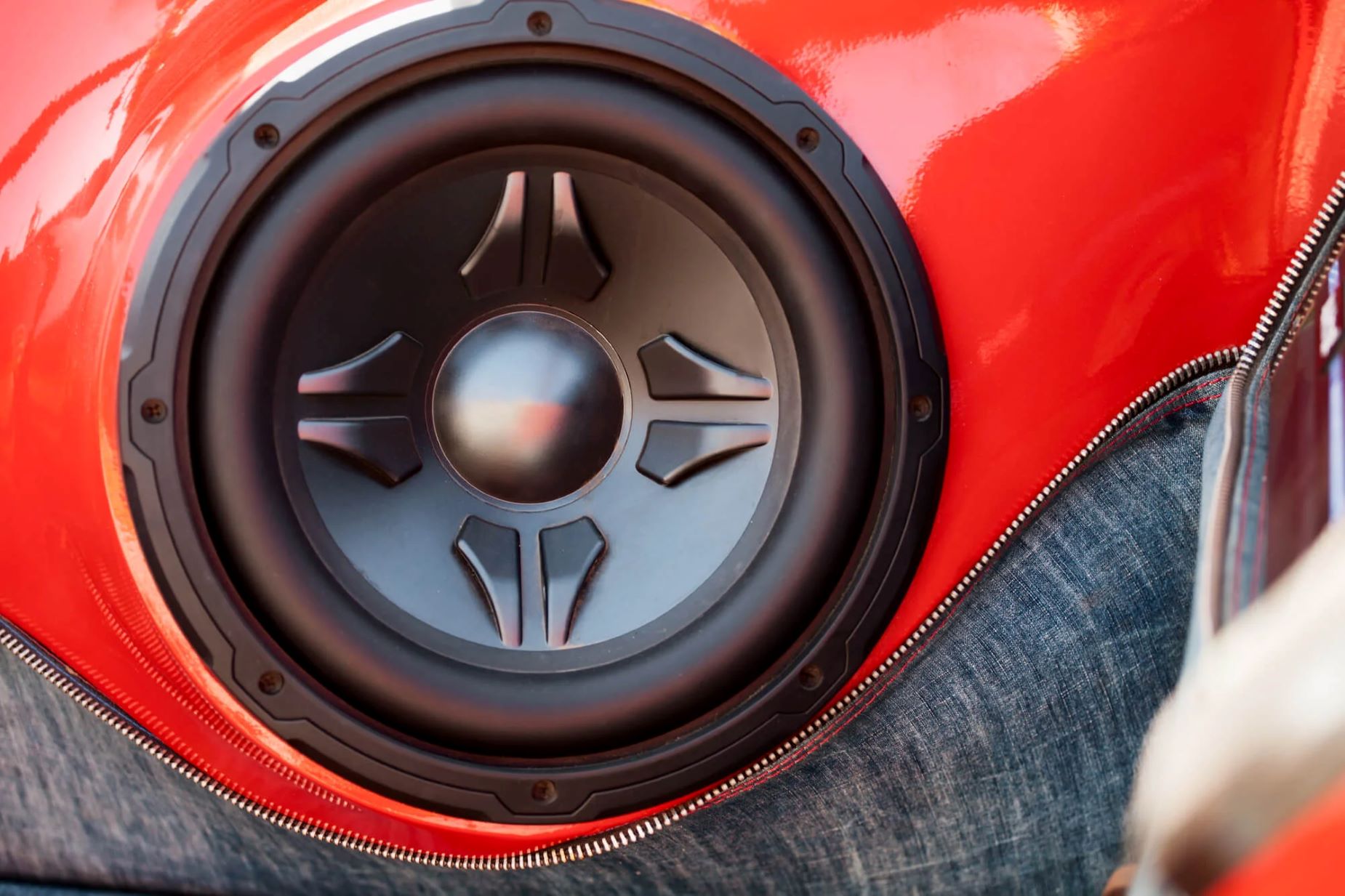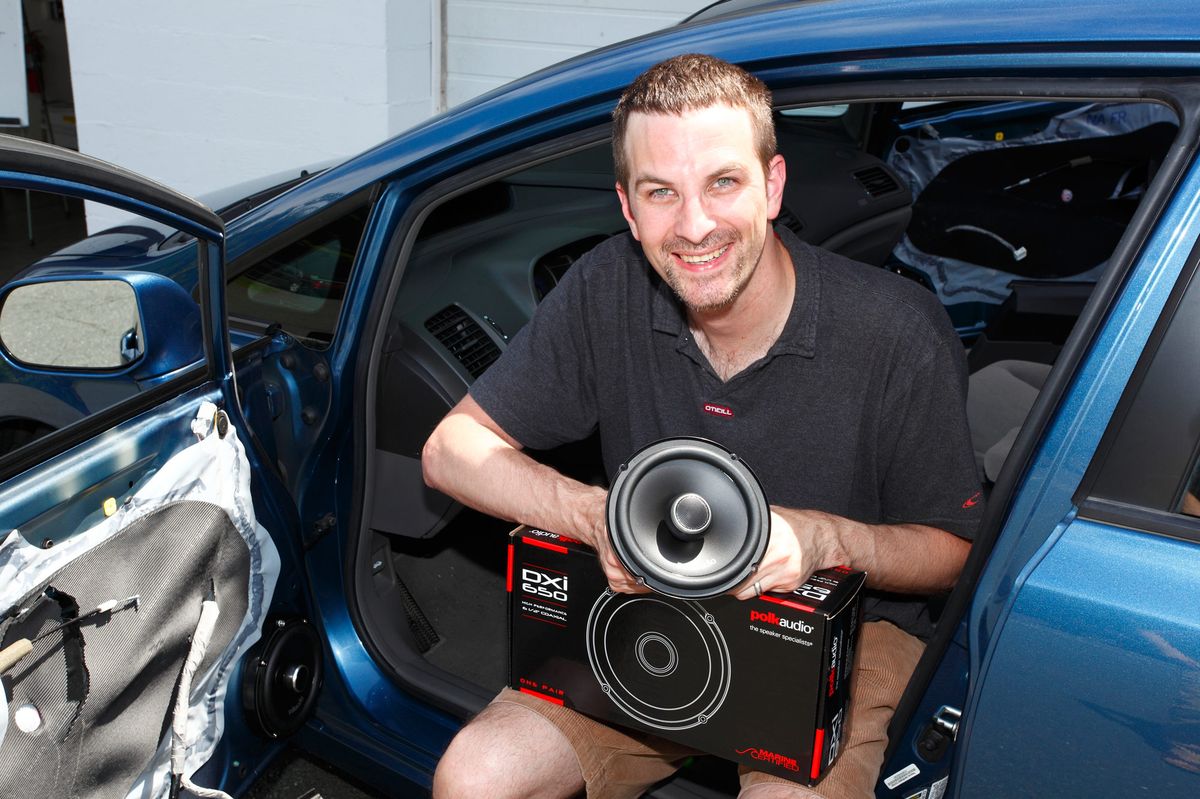Home>Devices & Equipment>Subwoofer>How To Connect A Subwoofer To A Car Stereo Without An Amplifier
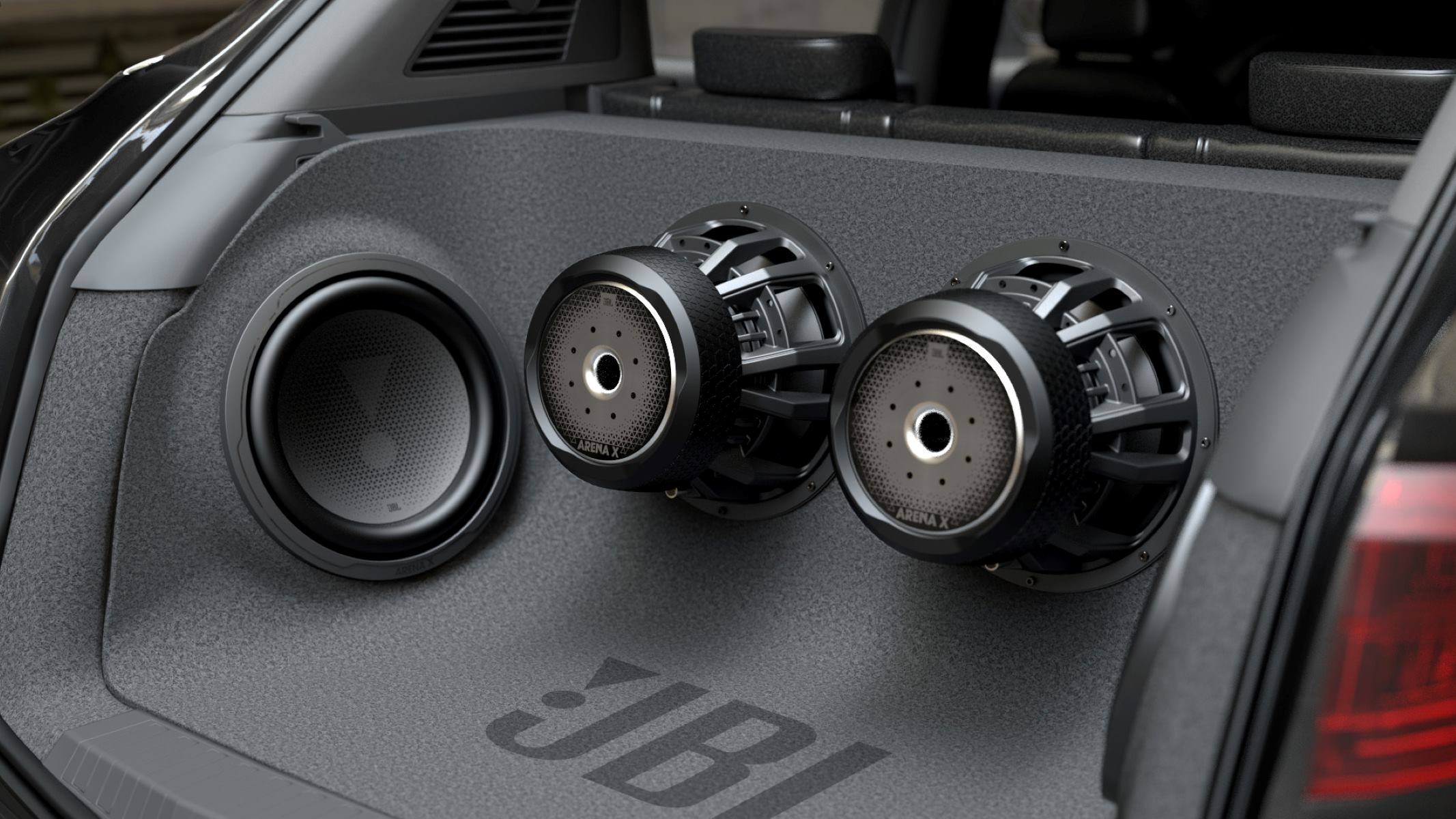

Subwoofer
How To Connect A Subwoofer To A Car Stereo Without An Amplifier
Published: January 22, 2024
Learn how to connect a subwoofer to your car stereo without the need for an amplifier. Enhance your audio experience on the road with this simple guide.
(Many of the links in this article redirect to a specific reviewed product. Your purchase of these products through affiliate links helps to generate commission for AudioLover.com, at no extra cost. Learn more)
Table of Contents
- Introduction
- Understanding Subwoofers and Car Stereo Systems
- Assessing Your Car Stereo System Compatibility
- Options for Connecting a Subwoofer Without an Amplifier
- Method 1: Using a Powered Subwoofer
- Method 2: Using a Line Output Converter (LOC)
- Method 3: Utilizing a High-Level Input Connection
- Method 4: Connecting through a Head Unit with Preamp Outputs
- Step-by-Step Guide for Connecting a Subwoofer Without an Amplifier
- Additional Tips and Considerations
- Conclusion
Introduction
Welcome to the world of deep bass and immersive audio experiences! Subwoofers are an essential component of any car audio system, delivering low-frequency sounds that bring your music to life. However, connecting a subwoofer to a car stereo can often be an intimidating task, especially if you don’t have an amplifier at your disposal.
But fear not! In this article, we will explore various methods and techniques for connecting a subwoofer to a car stereo without the need for an amplifier. Whether you’re a car audio enthusiast looking to upgrade your system or a casual listener wanting to enhance your bass, we’ve got you covered.
Before we dive into the nitty-gritty of connecting a subwoofer without an amplifier, let’s first take a moment to understand the basics of subwoofers and car stereo systems.
Subwoofers are specialized speakers designed to reproduce low-frequency sounds, typically below 100 Hz. They add depth and impact to your music, enhancing the overall listening experience. Car stereo systems, on the other hand, consist of different components, including the head unit, speakers, and amplifiers. The head unit serves as the control center, while the speakers produce sound. Amplifiers provide power to the speakers and subwoofers, amplifying the audio signals to create louder and clearer sound.
Now that we have a better understanding of subwoofers and car stereo systems, it’s important to assess the compatibility of your car stereo system with a subwoofer before attempting to connect them without an amplifier. Not all car stereo systems are equipped to handle the power requirements of a subwoofer, so it’s crucial to determine if your system has the necessary connections and features for proper integration.
Understanding Subwoofers and Car Stereo Systems
To effectively connect a subwoofer to a car stereo without an amplifier, it’s important to have a good understanding of how subwoofers and car stereo systems function.
Subwoofers are designed specifically to reproduce low-frequency sounds, also known as bass. They are responsible for delivering deep, powerful, and impactful bass notes that can significantly enhance your audio experience. Subwoofers come in various sizes, ranging from 8 inches to 18 inches, each offering different levels of bass response. Additionally, subwoofers can be powered or passive. Powered subwoofers have built-in amplifiers, while passive ones rely on external amplification.
On the other hand, car stereo systems consist of multiple components working together to produce sound in your vehicle. The main components include the head unit, speakers, and amplifiers. The head unit serves as the control center for your car audio system, allowing you to play music from different sources, control volume, and adjust audio settings. Speakers play a crucial role in reproducing the sound, and there are different types, such as tweeters, mid-range speakers, and woofers, each catering to a specific range of frequencies. Lastly, amplifiers provide power to the speakers, ensuring they receive enough electricity to produce high-quality sound.
When it comes to connecting a subwoofer to a car stereo, the amplifier plays a vital role. Amplifiers are responsible for boosting the audio signals and providing the necessary power to drive the subwoofer and other speakers. They ensure that the subwoofer receives sufficient power to deliver deep and impactful bass notes.
However, not all car stereo systems come with a dedicated amplifier for the subwoofer. This is where the challenge arises if you want to connect a subwoofer without an amplifier. While it may seem like a difficult task, there are several methods and techniques you can use to achieve this.
In the next sections, we will explore different options for connecting a subwoofer to a car stereo system without the need for an amplifier. These methods will allow you to enjoy enhanced bass without the hassle of installing an additional amplifier in your vehicle.
Assessing Your Car Stereo System Compatibility
Before attempting to connect a subwoofer to your car stereo without an amplifier, it is essential to assess the compatibility of your car stereo system. Not all car stereo systems are designed to handle the power requirements of a subwoofer, so it is important to determine if your system has the necessary connections and features for a successful integration.
The first step is to check if your car stereo system has preamp outputs. Preamp outputs, also known as RCA outputs, are often labeled as “Subwoofer Out” or “Sub Out” and are typically found on the back of the head unit. These outputs allow you to connect an external amplifier or a powered subwoofer directly, as they provide a dedicated signal for the subwoofer’s audio.
If your car stereo lacks preamp outputs, you can still check for other available options. Some car stereo systems have a dedicated subwoofer panel on the back of the head unit, providing a specific connection for a subwoofer. This panel may include speaker-level outputs or a specific subwoofer output that can be used for integrating the subwoofer without an amplifier.
Another option to consider is the presence of a built-in crossover in your car stereo system. A crossover is a circuit that separates and directs the different frequencies to the appropriate speakers. A car stereo system with a built-in crossover will allow you to adjust the crossover frequency specifically for the subwoofer, ensuring that only the low-frequency signals are sent to the subwoofer.
Additionally, it is crucial to consider the power handling capabilities of your car stereo system. This includes checking the power rating of your head unit and the power requirements of the subwoofer. Subwoofers typically have a recommended power range, and it is important to ensure that your head unit can deliver enough power to drive the subwoofer effectively. Insufficient power can lead to distorted sound or even damage the speakers.
Once you have thoroughly assessed the compatibility of your car stereo system, you can proceed to choose the most suitable method for connecting a subwoofer without an amplifier. In the following sections, we will explore different methods and provide step-by-step instructions for each method, allowing you to make an informed decision based on your car stereo setup.
Options for Connecting a Subwoofer Without an Amplifier
If your car stereo system does not have an amplifier dedicated to powering a subwoofer, don’t worry! There are several options available for connecting a subwoofer without the need for an additional amplifier. Let’s explore these options:
- Using a Powered Subwoofer: One of the easiest ways to connect a subwoofer without an amplifier is to use a powered subwoofer. Powered subwoofers come with a built-in amplifier and typically have RCA or speaker-level inputs. You can simply connect the subwoofer to your car stereo system using the provided cables or connectors, and the built-in amplifier will power the subwoofer. This option is often a convenient and straightforward solution for adding bass to your car audio system.
- Using a Line Output Converter (LOC): A line output converter is a device that converts the speaker-level signal from your car stereo system’s speaker wires into a line-level signal that can be connected to the RCA inputs of a subwoofer. It allows you to tap into the existing speaker wires to provide a signal for the subwoofer. The line output converter typically requires power, which can be obtained from a 12V power source in your vehicle. By using a line output converter, you can connect a subwoofer without an amplifier and still achieve a clean and powerful bass response.
- Utilizing a High-Level Input Connection: Some subwoofers are equipped with a high-level input connection option. This allows you to connect the subwoofer directly to the speaker wires of your car stereo system. The high-level input connection effectively bypasses the need for an amplifier by utilizing the power from your car stereo’s built-in amplifier. By connecting the subwoofer to the speaker wires, you can enjoy enhanced bass without the need for an external amplifier.
- Connecting through a Head Unit with Preamp Outputs: If your car stereo system has preamp outputs (RCA outputs), you can connect a subwoofer without an amplifier by utilizing these outputs. Simply connect the RCA cables from the preamp outputs of your head unit to the RCA inputs on the subwoofer. This direct connection allows the subwoofer to receive the low-frequency signals directly from the head unit’s dedicated subwoofer output. This method ensures proper signal transmission and optimal bass performance.
These options provide flexibility in connecting a subwoofer to your car stereo without the need for an amplifier. Depending on your specific setup and preferences, you can choose the method that suits you best. In the following sections, we will provide step-by-step guides for each method, ensuring a seamless and successful connection process.
Method 1: Using a Powered Subwoofer
One of the simplest and most convenient methods for connecting a subwoofer to your car stereo without an amplifier is by using a powered subwoofer. Powered subwoofers come with a built-in amplifier, eliminating the need for a separate amplifier to power the subwoofer. Here’s a step-by-step guide on how to connect a powered subwoofer:
- Choose a suitable location for your powered subwoofer in your vehicle. It is typically placed in the trunk or under a seat, but make sure it doesn’t interfere with the operation of other components or take up too much space.
- Locate the RCA inputs on the powered subwoofer. These inputs are usually color-coded (red for right and white or black for left) and labeled “R” and “L”. Connect the RCA cables from the subwoofer outputs of your car stereo’s head unit to the corresponding RCA inputs on the powered subwoofer. Ensure a secure connection by firmly inserting the cables.
- If your car stereo system does not have RCA outputs, you can use a line output converter (LOC) to connect the powered subwoofer. Connect the speaker wires from the head unit’s rear speaker outputs to the input side of the LOC. Then, connect the RCA cables from the output side of the LOC to the RCA inputs on the powered subwoofer. The LOC will convert the speaker-level signals to line-level signals required by the powered subwoofer.
- Connect the power cable from the powered subwoofer to a 12V power source in your vehicle. This is typically done by tapping into the fuse box or connecting directly to the car’s battery. Make sure to use an appropriate fuse and follow the manufacturer’s instructions for proper wiring.
- Adjust the settings on the powered subwoofer according to your preferences. Most powered subwoofers come with controls for volume, frequency response, and phase adjustment. Experiment with these settings to achieve the desired bass performance.
- Once everything is connected and set up, turn on your car stereo system and play some music with bass content. Enjoy the deep and immersive bass experience that the powered subwoofer brings to your car audio system.
Using a powered subwoofer simplifies the process of connecting a subwoofer to your car stereo without the need for an amplifier. It provides a convenient all-in-one solution, with the amplifier and subwoofer housed in a single unit. Whether you’re a beginner or an experienced enthusiast, a powered subwoofer is a user-friendly option that can greatly enhance your car audio experience.
Method 2: Using a Line Output Converter (LOC)
If your car stereo system doesn’t have RCA or dedicated subwoofer outputs, you can still connect a subwoofer without an amplifier by utilizing a Line Output Converter (LOC). A Line Output Converter converts the speaker-level signal from your car stereo’s speaker wires into a line-level signal that can be connected to the RCA inputs of a subwoofer. Here’s a step-by-step guide on how to connect a subwoofer using a Line Output Converter:
- Start by identifying the speaker wires of your car stereo system. You can consult the car stereo’s manual, use a wiring diagram specific to your vehicle, or use a multimeter to identify the correct wires for the rear speakers.
- Once you have identified the speaker wires, cut and strip a small section of insulation from each wire. Be cautious to avoid damaging the wires.
- Connect the positive (+) and negative (-) speaker wires from the rear speaker outputs of your car stereo to the corresponding positive and negative input terminals of the Line Output Converter. Ensure a secure connection by twisting the bare wire ends together and securing them with electrical tape or wire connectors.
- Now, locate the RCA outputs on the Line Output Converter. These are typically color-coded (red for right and white or black for left) and labeled “R” and “L”. Connect RCA cables from the Line Output Converter’s RCA outputs to the RCA inputs on your subwoofer. Again, ensure a secure connection by firmly inserting the cables.
- Once the connections are made, find a suitable location for the Line Output Converter. It should be placed in an easily accessible but hidden area, such as under a seat or in the trunk.
- If your Line Output Converter requires power, connect the power wire to a 12V power source in your vehicle. This can be achieved by tapping into the fuse box or connecting directly to the car battery. Follow the manufacturer’s instructions for proper wiring and ensure the power connection is secure and protected with an appropriate fuse.
- Turn on your car stereo system and adjust the settings for the rear speakers and subwoofer to achieve the desired sound balance. You may need to adjust the gain or crossover settings on the Line Output Converter or the subwoofer to optimize the sound output.
Using a Line Output Converter offers a versatile solution for connecting a subwoofer without an amplifier. It allows you to tap into the speaker wires of your car stereo system and convert the speaker-level signals into line-level signals that can be used by subwoofers with RCA inputs. With the right setup and adjustments, you can enjoy enhanced bass in your car audio system, even without a dedicated amplifier.
Method 3: Utilizing a High-Level Input Connection
If your subwoofer is equipped with a high-level input option, you can connect it directly to the speaker wires of your car stereo system. This method allows you to bypass the need for a separate amplifier by utilizing the power from your car stereo’s built-in amplifier. Here’s a step-by-step guide on how to connect a subwoofer using a high-level input connection:
- Locate the high-level input connections on your subwoofer. These are typically labeled as “High-Level In” or “Speaker-Level In.” They may be color-coded or identified as positive (+) and negative (-) terminals.
- Identify the speaker wires from your car stereo system that correspond to the rear speakers. You can refer to the car stereo’s manual or use a wiring diagram specific to your vehicle. Make sure to choose the correct wires to ensure that the subwoofer receives the appropriate audio signal.
- Once you have identified the speaker wires, use wire strippers to remove a small section of insulation from each wire. Be careful not to cut or damage the wires themselves.
- Connect the positive (+) and negative (-) speaker wires from the rear speakers of your car stereo system to the corresponding positive and negative terminals on the high-level input connection of the subwoofer. Ensure a secure connection by twisting the bare wire ends together and securing them with electrical tape or wire connectors.
- Ensure that the crossover and other settings on the subwoofer are properly adjusted to optimize the sound output. These settings may include adjusting the crossover frequency, phase, and gain controls, depending on the subwoofer model.
- Place the subwoofer in a suitable location in your vehicle. Popular locations include the trunk or under a seat. Make sure the subwoofer is securely mounted and does not interfere with other components or take up too much space.
- Turn on your car stereo system and play audio with bass content. Adjust the settings on your car stereo to balance the sound output between the subwoofer and other speakers, ensuring a smooth integration with the overall audio system.
Utilizing a high-level input connection allows you to connect your subwoofer directly to the speaker wires of your car stereo system, using the power from the built-in amplifier. This method simplifies the connection process by eliminating the need for a separate amplifier. By correctly setting up and adjusting the subwoofer’s settings, you can enjoy enhanced bass performance in your car audio system.
Method 4: Connecting through a Head Unit with Preamp Outputs
If your car stereo system has preamp outputs, also known as RCA outputs, you can connect a subwoofer without an amplifier by utilizing these dedicated outputs. This method allows for a direct and high-quality connection between the head unit and the subwoofer. Here’s a step-by-step guide on how to connect a subwoofer through a head unit with preamp outputs:
- Locate the preamp outputs on the back of your car stereo’s head unit. These outputs are typically labeled as “Subwoofer Out” or “Sub Out” and are color-coded (red for right and white or black for left).
- Identify the corresponding RCA inputs on your subwoofer. They are usually labeled “R” and “L” for right and left respectively. Ensure that the subwoofer is powered off before making any connections.
- Connect a pair of RCA cables from the preamp outputs on the head unit to the RCA inputs on your subwoofer. Insert the plugs firmly to ensure a secure connection.
- Once the cables are connected, check the settings on your head unit to ensure that the subwoofer output is enabled. Some head units may have separate settings for adjusting the subwoofer level, crossover frequency, or phase. Adjust these settings to your preference and according to the capabilities of your subwoofer.
- Place the subwoofer in a suitable location in your vehicle, such as the trunk or under a seat. Make sure it is securely mounted and properly positioned for optimal bass delivery.
- Power on your car stereo system and play audio with bass content. Adjust the settings on your head unit and subwoofer to achieve the desired bass level and integration with the rest of the audio system.
Connecting a subwoofer through a head unit with preamp outputs provides a direct and efficient method for integrating the subwoofer into your car audio system. The preamp outputs ensure a clean and dedicated signal for the subwoofer, allowing for accurate reproduction of low-frequency sounds. With proper setup and adjustments, this method ensures optimal bass performance and an immersive audio experience in your vehicle.
Step-by-Step Guide for Connecting a Subwoofer Without an Amplifier
Now that we have explored different methods for connecting a subwoofer to a car stereo without an amplifier, let’s provide a step-by-step guide that can be followed regardless of the method chosen:
- Assess your car stereo system compatibility: Check if your car stereo system has preamp outputs, dedicated subwoofer outputs, or a high-level input option. Ensure that your system can accommodate a subwoofer without the need for an external amplifier.
- Choose the appropriate method: Based on the compatibility of your car stereo system and personal preferences, select the most suitable method. Options include using a powered subwoofer, a line output converter (LOC), a high-level input connection, or connecting through a head unit with preamp outputs.
- Gather the necessary equipment: Depending on the method chosen, gather the required cables, connectors, and any additional components such as a powered subwoofer or line output converter. Ensure that you have everything needed for a successful connection.
- Locate the ideal position for the subwoofer: Determine the best location within your vehicle for the subwoofer. Common locations include the trunk or under a seat. Ensure that the placement does not obstruct other components and allows for proper airflow.
- Make the necessary connections: Follow the specific instructions provided for the chosen method to connect the subwoofer to your car stereo system. This may involve connecting RCA cables, speaker wires, or power wires as required. Ensure that all connections are secure and properly insulated.
- Adjust the settings: Take the time to adjust the settings on your subwoofer, line output converter, or head unit to optimize the bass performance. This may include adjusting the crossover frequency, gain, phase, or other settings available to fine-tune the sound.
- Test and fine-tune: Once the connections and settings have been adjusted, turn on your car stereo system and play audio with bass content. Listen carefully to the sound output and make any necessary adjustments to achieve the desired bass level and integration with the rest of the audio system.
- Enjoy the enhanced audio experience: Sit back, relax, and enjoy the deep and immersive bass that your newly connected subwoofer brings to your car audio system. Let yourself be moved by the powerful low-frequency reproduction and the impact it adds to your favorite music.
Following this step-by-step guide will ensure a successful connection of your subwoofer to your car stereo system without the need for an amplifier. Remember to refer to the specific instructions provided for the chosen method to ensure a seamless integration and optimal audio performance.
Additional Tips and Considerations
While connecting a subwoofer to a car stereo without an amplifier can be a rewarding experience, there are some additional tips and considerations to keep in mind to ensure optimal performance and a seamless integration. Here are some important points to consider:
- Choose the right subwoofer: Select a subwoofer that is compatible with your car stereo system and suits your musical preferences. Consider factors such as the subwoofer’s power handling, size, and frequency response to ensure it meets your specific requirements.
- Pay attention to power requirements: Ensure that your car stereo system can provide enough power to drive the subwoofer effectively. Insufficient power can lead to subpar audio quality and potentially damage the subwoofer. Refer to the subwoofer’s power requirements and your car stereo’s power output to make sure they are compatible.
- Properly integrate the subwoofer into your vehicle: Place the subwoofer in a secure and suitable location within your vehicle. Avoid placing it in a way that obstructs functionality or takes up excessive space. Take into account factors like weight distribution, ventilation, and impact resistance when choosing a location.
- Adjust the settings for optimal performance: Fine-tune the settings on your subwoofer, line output converter, or head unit to achieve the best bass performance. Experiment with the crossover frequency, gain, phase, and equalization controls to find the balance that complements your audio system and musical preferences.
- Consider professional installation: If you’re unsure about the installation process or want to ensure the best results, consider seeking professional help. Experienced car audio installers can provide expert advice and perform the installation to ensure a seamless and high-quality connection.
- Be mindful of power usage: Connecting a subwoofer without an amplifier increases the power draw from your car stereo system. Be aware of your vehicle’s electrical system’s capacity to avoid overloading it and potentially causing electrical issues. Consider upgrades to your vehicle’s electrical system if necessary.
- Protect your subwoofer: Use appropriate protective measures to safeguard your subwoofer. This includes using a properly sized enclosure, securing it to prevent movement during vehicle operation, and ensuring proper ventilation to prevent overheating.
- Regularly check connections: Periodically inspect the connections between the subwoofer and car stereo system to ensure they are secure and free from corrosion or damage. Loose connections can affect sound quality, and corrosion can impact signal transmission.
By keeping these tips and considerations in mind, you can ensure a successful and enjoyable experience while connecting a subwoofer to your car stereo without the need for an amplifier. Enjoy the enhanced bass and immersive audio experience that a well-integrated subwoofer brings to your vehicle.
Conclusion
Connecting a subwoofer to a car stereo without an amplifier opens up new possibilities for enhancing your audio experience on the road. By following the methods and guidelines outlined in this article, you can achieve a seamless integration and enjoy deep, impactful bass without the need for an additional amplifier.
We started by understanding the basics of subwoofers and car stereo systems, which laid the foundation for assessing the compatibility of your car stereo system. We explored several options for connecting a subwoofer without an amplifier, including using a powered subwoofer, a line output converter (LOC), a high-level input connection, or connecting through a head unit with preamp outputs. Each method offers its own benefits and considerations, allowing you to choose the most suitable option for your specific setup.
With the step-by-step guide provided in this article, you have a clear roadmap for connecting a subwoofer to your car stereo system without an amplifier. From identifying the necessary connections to adjusting the settings for optimal performance, each step ensures a successful integration and an enhanced audio experience.
Additionally, we discussed some additional tips and considerations to help you make the most of your subwoofer installation. Taking into account factors such as subwoofer selection, power requirements, proper installation, and regular maintenance will ensure reliable performance and longevity of your audio system.
Remember, experimentation and fine-tuning are key to achieving the desired bass response and audio balance. Don’t hesitate to adjust settings and seek professional advice if needed to optimize the performance of your system.
By connecting a subwoofer without an amplifier, you can transform your car audio system into a powerhouse of deep, immersive sound. Whether you’re cruising down the highway or stuck in traffic, the enhanced bass will make your music come alive and create a truly enjoyable driving experience.
So, go ahead and take the plunge. Connect that subwoofer to your car stereo system and revel in the power and impact of low-frequency sound. Get ready to feel the music like never before and enjoy a whole new level of audio pleasure on the road.




